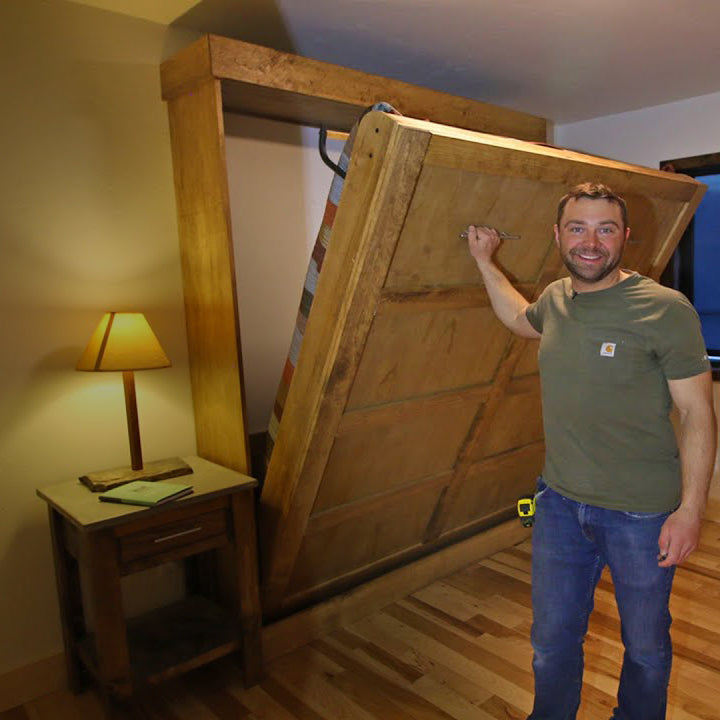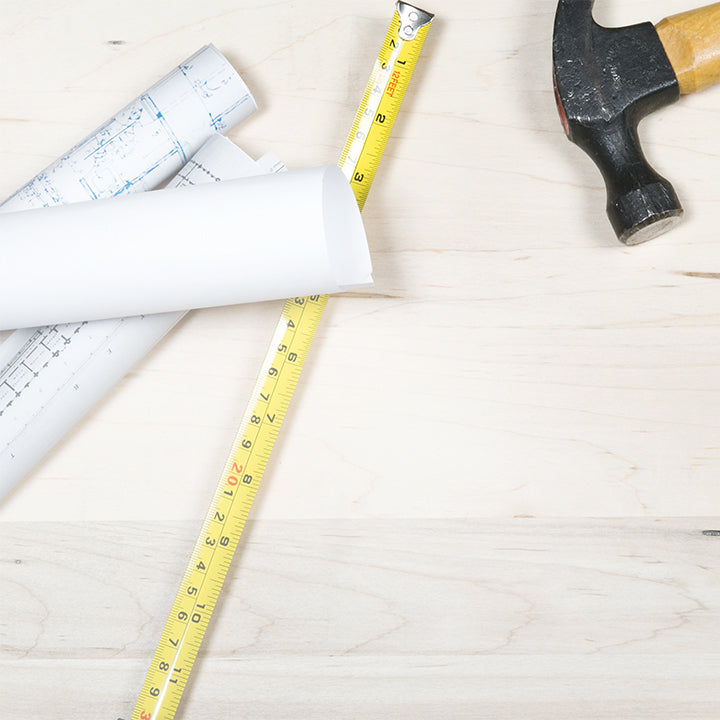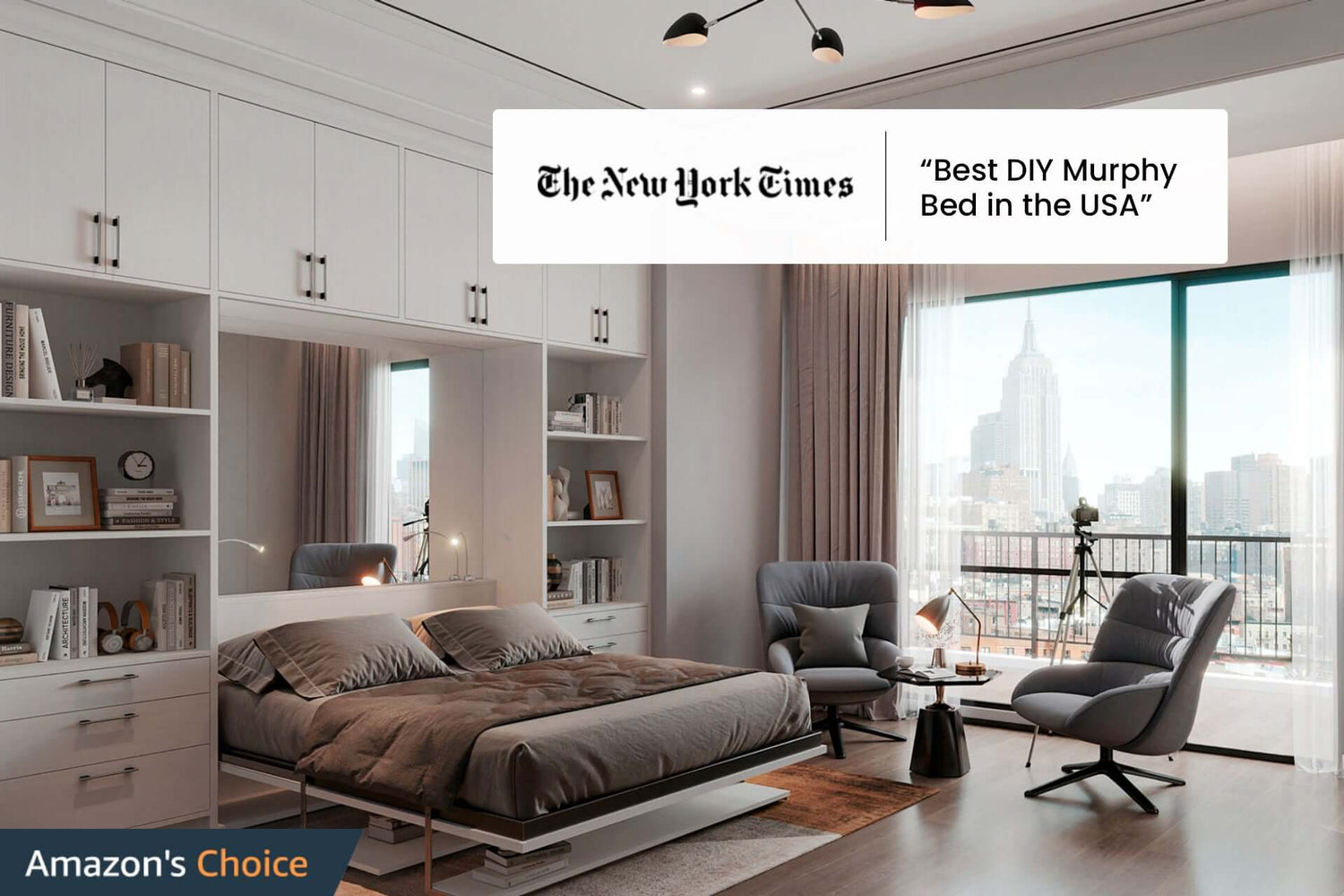As homeowners try to squeeze more out of their spaces, the once humble, now elevated Murphy bed is finding a new fan base in suburbia.
The office that Veronica Solomon designed for a couple in suburban Houston has everything.
There’s a sitting area with citron yellow accent chairs and a coffee table; a desk with floral hardware; splashy patterns in bold colors on the rug and wallpaper; and a custom neon sign in glowing pink.
The office also contains a secret: The teal wall unit with built-in shelving with artwork permanently affixed to its facade actually contains a full-size Murphy bed.
Now the couple has a three-in-one room where the wife, a retired basketball coach, can work and entertain, and overnight guests can comfortably sleep.
A Houston home office designed by Veronica Solomon of Casa Vilora Interiors.
“The bed is really a great use of space, and a great way to make a room really function for a lot of different things,” said Ms. Solomon, founder of Casa Vilora Interiors.
Murphy beds have always served a purpose as space-savers in small urban apartments. With the pandemic, however, as more suburbanites have been working from home, even they have turned to Murphy beds as they eke the most out of their home offices while keeping the background of their Zoom calls free of a rather intimate piece of furniture.
According to market research from Resource Furniture, which specializes in transforming furniture and has its headquarters in New York, about 40 percent of its clients who bought wall beds last year live in single-family homes with three or more bedrooms. From 2020 to 2021, Resource’s sales increased 60 percent, with wall beds accounting for over half the increase.
The Murphy bed was invented by William Lawrence Murphy, who patented his design in 1911. According to Smithsonian magazine, the bed’s invention was a means of avoiding a salacious situation: Its creator wanted to entertain his opera singer sweetheart at his San Francisco studio, but propriety demanded that his bed be out of sight. A bed that folded into his closet did the trick.
Despite their sexy origin story, Murphy beds have historically been played for laughs in pop culture — even as far back as the 1916 film “One A.M.,” which shows Charlie Chaplin drunkenly fumbling around a floppy wall bed. Eventually, Murphy beds became so ubiquitous that in 1989, a federal appeals court in New York found that the name had grown too generic to retain its trademark. Now, “Murphy bed” and “wall bed” are used interchangeably.
Economic conditions also play a role in the wall bed’s popularity. Challie Stillman, the vice president for sales and design at Resource Furniture, noted that the last time the company’s Murphy beds (which are made by the Italian manufacturer Clei) had a marquee moment was during the 2008 recession.
“Our business took off because people were really forced to remain in their existing homes rather than upgrading, so they were trying to make more use of what they already had,” Ms. Stillman said. With another recession possibly on the way and inflation already here, Ms. Stillman said Resource was forecasting a similar increase.
Murphy beds now come in a range of options, and can accommodate any size mattress, from twin to king. Prices range from about $1,000 to $20,000, which gets you a lot of frills like a couch and shelving. While the beds once had a reputation for being flimsy, today they use piston and spring mechanisms that make them more secure.
Ryan Jestin, an owner of the Mod Barn, a Los Angeles furniture design store, prefers the spring mechanism. “It’s just one panel that folds down with the mattress, so it looks much more visually appealing this way,” he said. His most popular model, a bed that folds out of the frame and has a couple of cubbies, starts around $4,800.
There are also prefabricated options. Michelle Allen, a 49-year-old product designer, bought a queen- size version from Amazon for around $1,800 to install in the art studio of her Vancouver home. Her husband and son put the bed together in about three or four hours, she estimated. “I’m fairly handy, but you probably wanted somebody with a little bit of tool experience,” Ms. Allen said.
Bespoke varieties exist, too, and Mr. Jestin has designed Murphy beds for more than 20 years. He enjoys working with them because “they transition your room so much,” he said.
Mr. Jestin has designed wall beds with sliding bookcases in front and others with desks attached to the outside that fold up when the beds come down. He has even built a kid’s playhouse with a Murphy bed inside (and an interactive Lego front).
Others have taken to designing and constructing the beds themselves. Last fall, Jocelyn Folaron, 26, was a nursing student living in a three-bedroom house in Buffalo, N.Y., with her husband and four dogs. One of the bedrooms was small — too small to comfortably plop a bed in it while still having the space for other uses — so Ms. Folaron, who runs the Cheeky DIY Home blog, built one.
Using a hardware kit from Create-A-Bed in Louisville, Ky., she built a full-size Murphy bed. It took Ms. Folaron about two months to complete the room, though the system she used could be built in two days. Between the mechanism, wood and screws, her bed cost around $800 to build.
The resulting room is what she described as “dark and moody” with a walnut-stained Murphy bed, forest green vertical shiplap wall and gold accents. Ms. Folaron has since graduated from nursing school and moved with her husband to a new home in Tucson, Ariz., where she is once again considering adding a Murphy bed.
“If you can kill two birds with one stone, I’m that kind of person,” she said, adding that “being able to design it and make it more modern-looking is ideal.”
In addition to their functionality, another part of Murphy beds’ appeal is the element of surprise and delight they add to a room.
Genevieve White Carter and Cy Carter, married interior designers who live in St. James, N.Y., designed a home Venice, Calif., where they color-matched a Murphy bed’s unit to a pink oxford shirt. When the bed is up, even the built-in shelves with knickknacks are concealed — on Zoom calls, the clients’ colleagues thought it was a just cool pink wall. “I do think that there’s kind of a fun, secret-y element about it, as well as it being practical and utilitarian,” Mr. Carter said.
The designers have since pitched Murphy beds to several residential and commercial clients — often to delighted response. “The client is like a little kid,” Mr. Carter said. “I think that there is a part of it of like, ‘Oh look, this whole other room comes down, like a secret passageway.’”








